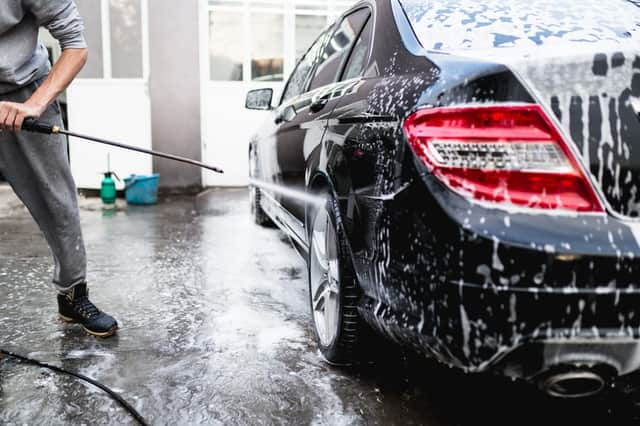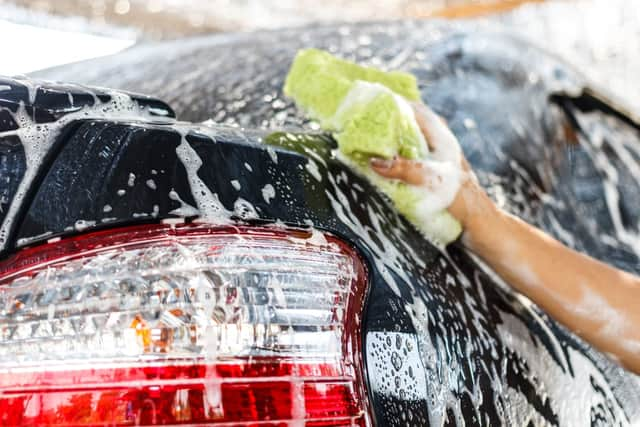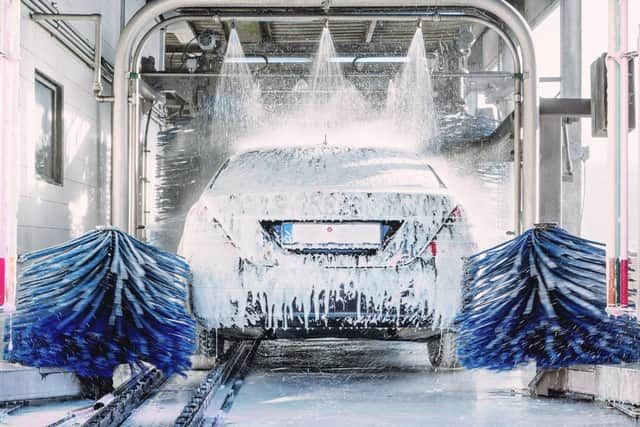How to spring clean your car: expert advice, plus the items you should never use


It looks like we might finally have escaped the worst of the winter weather, with temperatures rising and days getting longer.
After months of cold, wet days and long periods of sitting unused thanks to lockdown, it’s likely that many of our cars are looking a little worse for wear. With the road conditions getting better and the prospect of more freedom on the horizon, now is the perfect time to give your car a spring clean.
Advertisement
Hide AdAdvertisement
Hide AdTo help get your car back in top condition, we’ve spoken to the experts at car cleaning specialist Auto Finesse to get some tips and tricks to get a sparkling finish at home or at your nearest jet wash.
Wheels
The first job is to rid your wheels of any loose grime with a thorough pre-rinse. Grab a wheel cleaner and apply to each wheel, letting it pre-soak for a minute or two. Rinse your wheels to remove the worst of the dirt, then grab a bucket of water and add a car shampoo. Start with the dirtier inners using a brush and then move on to the faces.
Pre-Wash
Start your pre-wash by quickly applying a grime remover to the bodywork. If you don’t have a specialist removing fluid, hose down the panels with fresh water to sluice off any loose dirt. Whether you’re using a pre-wash solution or simply water you should work from the top down to clean the surface dirt off the bodywork.
Contact Wash


To ensure a swirl-free wash, it’s important to use two buckets – one containing a good-quality soap and the other plain water. Take on the less dirty areas first, (the roof, windscreen and bonnet) and always rinse your mitt or cloth in the plain water bucket before loading up with more soap. Once you’ve completed the whole car, you can move on to the final rinse.
Drying
Advertisement
Hide AdAdvertisement
Hide AdIt’s always important to dry your car after washing, it’s the only way to prevent watermarks and spotting. Use a specialist drying towel, start with the bodywork and then move onto the door jambs and boot shuts and then finish up with the wheels. Remember to take your time, and make sure you get all the water. Clean, unfiltered water isn’t pure like rainwater, and that’s why it can leave marks, especially in hard water areas.
Finishing Touches
Buff your windows and mirrors to a smear-free finish using a glass cleaner. Spray directly onto glass, and wipe. You can also clean the inside of the windows here. Adding a tyre cream is a finishing touch that will also nourish your rubber, adding protection from UV-induced cracking and fading along the way.
Lastly, adding a finishing spray can mop up any stray water droplets and remove any leftover watermarks. Apply a fine mist to one section at a time, spread with a cloth, and then fold and buff until the finish is clear.
The tools you should avoid
As well as the dos of car cleaning, there are some don’ts as well, which the experts at LeaseCar.co.uk have shared.
Automatic car wash


Advertisement
Hide AdAdvertisement
Hide AdAlthough a vehicle might appear spotless after a ride through the automatic car wash, the bristles and drying clothes soak up road grime and grit from every car that passes through, which then gets scraped past your car's bodywork. They are a quick fix to help if your car is truly filthy but shouldn’t be used as a regular method of cleaning.
Washing up liquid
Despite the detrimental effects of using dish soap on a car being proven time and again, people still us it. The chemicals used to cut through the grease on your dishes can eat into the clear topcoat of a car over time, causing colour fading and reducing the protection the paint provides to the bodywork. Paint jobs can be costly to sort, so a sensible solution would be picking up some specialist shampoo for the vehicle.
Towels, flannels or sponges
Not only can they have detergent residue on, but the rough-seamed edges on normal towels are abrasive enough to scratch paint and, like sponges, will hold deeply ingrained dirt that can then cause fine scratches on the surface of a car Microfibre cloths are a much better alternative but be sure to clean them thoroughly between washes.
Pressure washers
Pressure washers are handy for loosening stuck on dirt and for quickly rinsing cars but, used carelessly they can cause damage. A high-powered jet of water can work its way under any exposed edges of paint and force further damage. The rubber seals on a car's window and doors is only designed to keep rain and puddles away, not for water blasted at pressure. To avoid peeling paint work and damp interiors, switch out the powerful jet for a trickling hose.